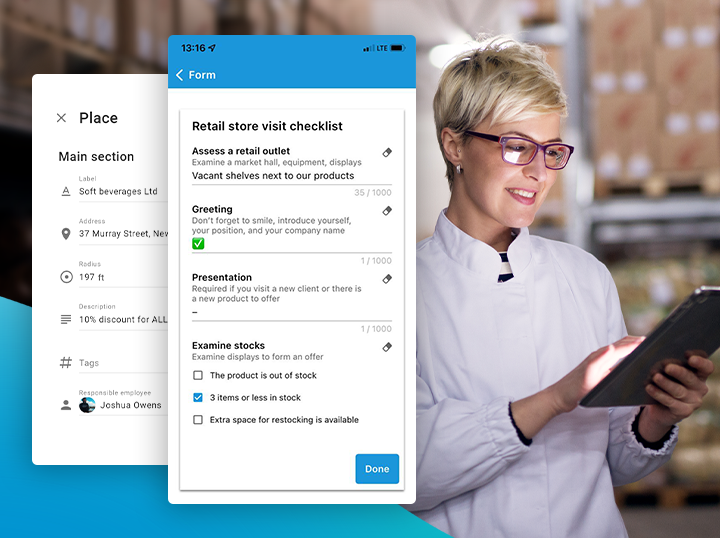The world witnessed a historic shift in the workplace setting during the coronavirus pandemic. Working from home has become the new normal, and worldwide professionals have permanently reshaped how their businesses operate. While some changes have already been enforced in many companies, the question remains: how can you effectively manage your workforce in the new normal?
According to a study by Vox, it’s predicted that approximately 70% of managers and employees will be doing remote work at least five days a month in 2025. With this forecast, companies must start reinventing their future and leverage their workforce management. Having a forward mindset and investing in the best mobile workforce management software are some of the ways to get started.

Photo by Tima Miroshnichenko from Pexels
Here are other foolproof tips on how to manage your workforce in the new normal and prepare your business for the future.
1. Understand your employees on a mental and emotional level
As much as you’re interested in your employees’ skills and work, you should also be interested in their thoughts and emotions. A company is defined by its people, and self-fulfilled people can help the company grow. Understanding your employees’ attitudes can also help you determine the way they’ll interact with your customers.
To know your employees on a deeper level and help them with their needs, make sure to keep in touch with them regularly. Conduct one-on-one virtual meetings and ask how they’re coping with the new normal. You should also provide the necessary mobile workforce app to motivate your employees and boost their productivity. After all, happy people are more efficient and productive.
2. Avoid getting stuck and being indecisive
As an employer or business owner, you may have doubts whether the new normal is a permanent thing. It’s common to wonder, but this shouldn’t stop you from moving forward and adapting your business to the requirements of the new normal workforce setting.
The sudden changes shouldn’t lead to a freeze in your business decisions. Instead, you should encourage your employees to be more flexible with their work processes. Look for ways on how you can automate your workforce management operations. If you can’t be positive about the new normal, how can you expect your employees to move forward?
3. Reskill and upskill your employees
During the pandemic, employers were forced to cut off some employees—leading to changes in the workload. Some companies merged their marketing and customer service departments, while others doubled the tasks of their managers. This scenario will likely be the new normal, and employees should be taught how to deal with a quickly-changing workplace.
To help your employees adapt to the new work setting, you can reskill and upskill them. Both these strategies will help your employees build a learning mindset and move from one part of your business to another. Reskilling and upskilling are also necessary for your business to remain competitive in your industry. As shown in the report from LinkedIn, 59% of business professionals consider reskilling and upskilling a top priority for training programs in 2021.
4. Increase communication and team involvement
There may be fewer face-to-face meetings in the new normal, but this shouldn’t prevent you from communicating with your employees. Communication is essential for a business to thrive. It’s necessary to make your employees feel involved in the work processes and promote transparency.
To effectively communicate with your employees, conduct regular virtual meetings via video-conferencing apps. You may also do quick check-ins through audio calls. Make sure everyone is involved by using workforce management software where your team can easily communicate and see all projects in a single dashboard. If anything else, you can always send emails or have group chats.
5. Recognize and value your employees’ work
Workload changes can affect your employees work-life balance. As a result, they might feel more stressed with their daily hustle and
less motivated to complete a task. Support your employees by recognizing their work. Let them know that you value their accomplishments, and their hard work highly contributes to your company’s success.
You may incentivize your workers’ performance by giving rewards to the “most productive employee of the month.” Of course, you should set clear and fair guidelines when implementing this scheme. Another way you can provide recognition is through shoutouts or sending a “thank you” email. That way, your employees will less likely feel isolated from their work and be motivated to do better.
6. Provide accessible workforce management tools and software.
Last but not least, your employees should have access to tools and applications necessary for their remote work—whether they’re into public relations major careers or field sales execution.
You can provide a list of workforce management software, and the team can agree on the tools to use based on your company’s needs, daily operations, customer interactions, and marketing efforts.
Other things to consider when creating a WFM tools list are:
- Time tracking
- Project management
- Team communication
- Analytics and reporting
- Software and app integrations
Manage your workforce now and act for the future
If one thing is for sure, it’s that the world is uncertain. The pandemic hasn’t only encouraged people to adapt to a rapidly-changing work setting but also support one another through challenging times. The shift wouldn’t be easy, but with ample preparedness and full cooperation, your business will thrive in the new normal and in the future.
Hopefully, the workforce management tips above will help you improve your remote work operations. Give yourself and your employees the chance to adapt comfortably and reap the benefits of a digitized remote work environment.






















